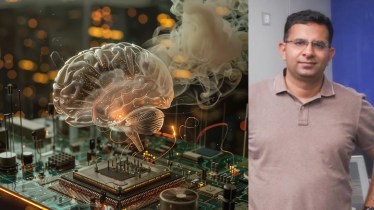Modern AI can write code, prepare legal notes and even help plan businesses. But it still struggles with something very simple – remembering what users said before. AI tools are extremely smart, but they are also extremely forgetful. Once a conversation ends, most AIs lose almost all the information from it. The context disappears. Users start a new chat and have to explain everything again. This breaks the flow of work and makes the experience feel less personal.
Experts believe that this reason is technical. Large language models – the technology behind today’s AI – are not built to store long-term memory from user conversations. “They generate answers by predicting words based on their training data, not by recalling past chats with individual people,” Gaurav Dadhich, Founder of Maximem AI said.
Memory vault
For everyday users, this forgetfulness shows up immediately. People want AI that behaves like a reliable partner, someone who knows their preferences and remembers ongoing tasks. Instead, they often find themselves repeating basic facts. To bridge this gap, Maximem launched its first product ‘Vity’, as a Chrome extension. The AI company claims that its newly launched product acts as a secure, interoperable memory vault under your control; not AI’s. “It learns about the user easily, remembers accurately, keeps memory portable across AI tools and allows people and teams to stay in productive flow, without surrendering their entire digital lives,” Dadhich explained.
The company claims that the development of Maximem continues to advance inside Scaler School of Technology’s (SST) Innovation Lab, where the team works closely with student developers and early adopters to pressure-test ideas, turning prototypes into production-grade infrastructure.
The idea is to build an AI that remembers things like how a person writes, what projects they are working on, and what goals they have, without invading their privacy. Researchers believe that good, safe memory will unlock a huge jump in how useful AI can become.
“We’re not just building a tool, we’re shaping the future of human-AI interaction by making human context persistent, private and easily accessible,” he said.
Challenges and concerns
But this progress comes with challenges. Storing memory raises serious questions about privacy, consent, and how long data should be kept. Regulators in the US, Europe and elsewhere are watching closely. Engineers also worry about building AI that remembers too much. The goal is to let users decide what the AI keeps, what it deletes, and when it should forget.
With SST’s Innovation Lab enabling rapid experimentation and deployment, Maximem is moving this from idea to infrastructure; building the layer that lets AI understand users over time, not just in single sessions.
Still, most experts agree that solving the memory problem is essential. Intelligence is not only about giving good answers – it’s also about learning from past experience. Until AI systems can remember conversations the way humans do, they will remain powerful but incomplete tools.
